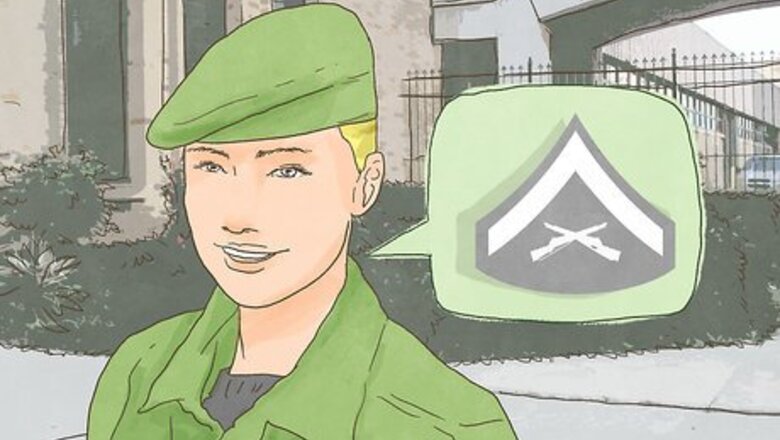
views
Meeting Basic Qualifications
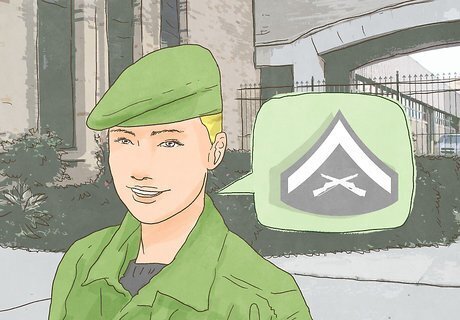
Reach the appropriate rank. Ordinarily, to become a Marine sniper you must reach at least the rank of Lance Corporal (E-3), and be no higher than the rank of Sergeant (E-5). Certain Ground Intelligence Officer (Military Occupational Specialty 0203) members of the Infantry (MOS 03XX), senior non-commissioned officers (SCNCOs), and international students can sometimes be permitted to undergo sniper training. A lance corporal is the third enlisted rank in the Marines, equivalent to a Private First Class in the U.S. Army. You may receive promotion to Lance Corporal after one or more years of service. Applicants at the rank of Sergeant and above must have a temporary duty (TD) fitness report. Your Military Occupational Specialty (MOS) should be Infantry if you want to become a sniper.

Have excellent vision. Successfully completing the tasks of a sniper, such as target identification and long-distance firing, requires you to have very good vision. To be eligible for training as a Marine sniper, you must have 20/20 vision or vision that is correctable to 20/20.

Have yourself medically cleared. The missions which snipers complete can be physically grueling, and so snipers are required to be in excellent health, with no recurring illnesses or health problems. A fitness test and health clearance will be required before you can begin training.

Score well on the Armed Services Vocational Aptitude Battery (ASVAB) test. To be eligible to be trained as a Marine sniper, you must score at least 100 on the General Technical (GT) section of the ASVAB, which evaluates your knowledge and potential in fields such as mathematical reasoning and mechanical comprehension.

Have a current Secret clearance, or be eligible to obtain one. The Department of Defense issues personal security clearances at the Top Secret, Secret, and Confidential levels. Since Marine snipers are often involved in highly specialized missions, you must have reached Secret clearance before you can begin sniper training. To receive secret clearance, you must be a U.S. citizen or naturalized citizen, work in a position that the Department of Defense determines necessitates this clearance, and undergo a background investigation. Your security clearance may also need to be periodically renewed.
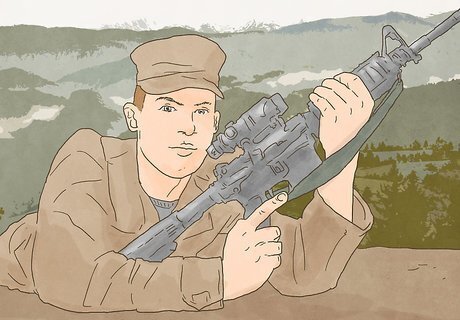
Receive an “expert” rifle qualification. Excellent marksmanship is an essential skill of any sniper, and so the Marines must qualify you beforehand at the “expert” level of rifle usage.

Have no record of getting a court marshall or receiving Non-Judicial Punishment (NJP) within the last six months. Marine snipers are a select, elite group entrusted with highly specialized missions. Superior conduct is expected from those hoping to begin sniper training.

Have at least 24 months remaining in the Marine Corps, and/or be scheduled to deploy with your unit after completing sniper training. The training provided to Marine snipers is extensive and takes significant time to complete. The Marines want to ensure that the investment of time and effort to train snipers is worth it, so you will need to make a long-term commitment to the service.

Have no existing family or financial problems that would prevent you from undergoing sniper training. Marine sniper training and service requires great focus. If there are family or financial problems that can distract you, it may be difficult to complete the tasks required.
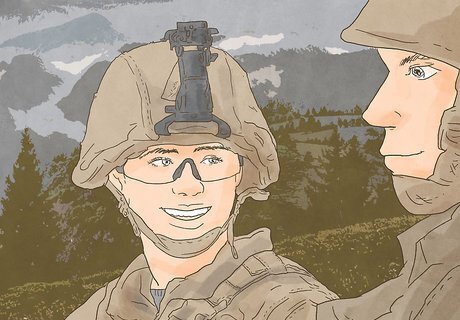
Consider completed recommended training. Certain qualifications are not necessarily required to begin sniper training, but having them may increase your chances of being selected for the program. These include: Completion of Marines Corps Institute (MCI) or distance learning in the following areas: Land Navigation, Infantry Patrolling, Basic Forward Observer Procedures, and Reconnaissance Attendance at Sniper platoon training Completion of an infantry training cycle or deployment Swimming certification at class 2 or higher
Training
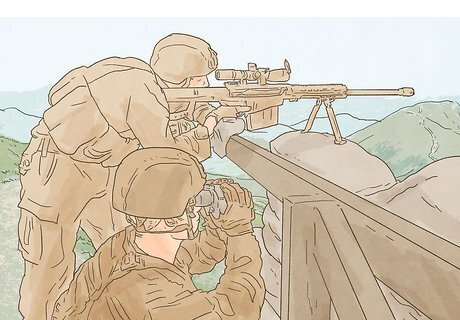
Serve in a battalion scout-sniper platoon. Battalion-level sniper training is available for candidates who pass a two-week indoctrination course. After serving in a battalion-level scout-sniper platoon, you may be eligible to attend a formal Marine Scout Sniper course. If you are interested in becoming a sniper, ask your superiors about attaining battalion-level training as a first step.

Pass physical fitness tests. As soon as you begin training as a Marine sniper, you will need to pass physical fitness tests (PFT) at a first class level (score of 225). Thus, it is a good idea to train beforehand to ensure that you will be able to pass these tests. Components of these tests include: A timed three mile run Pull-ups, untimed for men; flexed-arm hang, timed, for women Crunches, two minutes, timed An 880-yard sprint An ammunition lift (30 pounds over your head, two minutes)
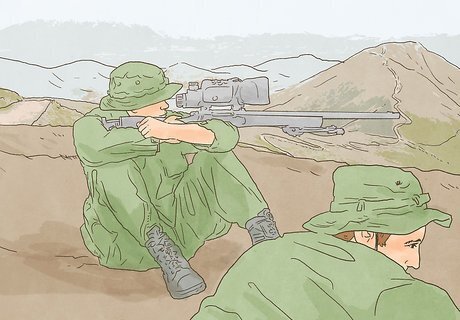
Volunteer to attend a Scout Sniper basic course. In order to become a Marine sniper, you must complete a training course at one of the four School of Infantry locations. These include the Scout Sniper Instruction School, Quantico, VA; the School of Infantry (SOI) East at Camp Geiger, North Carolina; the SOI West at Camp Pendleton, California; and the Marines Corps Base (MCB) in Kaneohe, Hawaii. To take one of these courses, you must volunteer and be selected by your unit, so talk to your superiors if you are interested in the opportunity. The Scout Sniper Course (SSC) is a twelve-week training program, designed to educate designated trainees in the basic techniques and equipment of Marine snipers. It is divided into three phases.
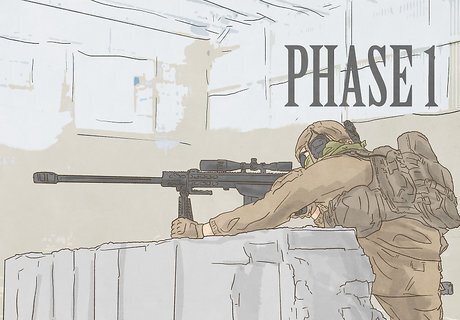
Complete Phase 1 of the Scout Sniper basic course, Field Skills and Known Distance Marksmanship. Though classwork and practical applications, this phase will introduce students to basic tasks of snipers, including land navigation, functional fitness, marksmanship, ballistics, cold bore, and range estimation. Students will receive training in shooting at known distances using the M40 series sniper rifle and Semi-Automatic Sniper System (SASS). Practical training will cover hides and surveillance, and coursework will cover mission planning and orders writing.

Complete Phase 2 of the Scout Sniper basic course, Stalking and Unknown Distance Marksmanship. This phase equips students with knowledge and skills to engage with moving and unknown distance targets. Topics include camouflaging sniper equipment, firing positions, and methods of engaging targets at various ranges. By the end of this phase, students will demonstrate mastery of target movements at distances of 1,000 meters, and of engaging targets at unknown distances up to 800 meters.
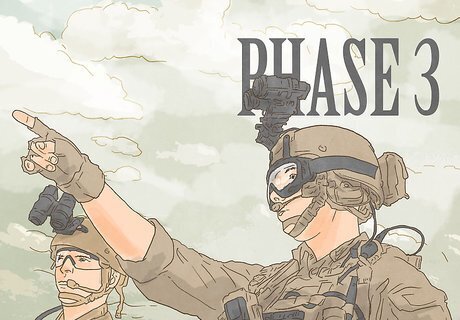
Complete Phase 3 of the Scout Sniper basic course, Mission Planning and Employment. In this phase, students receive instructions regarding the duties of each billet within a scout sniper team, in order to equip them with the knowledge and skills necessary to plan sniper missions. The phase will end with a performance evaluation designed to test students’ abilities to plan, coordinate, and execute an assigned mission.
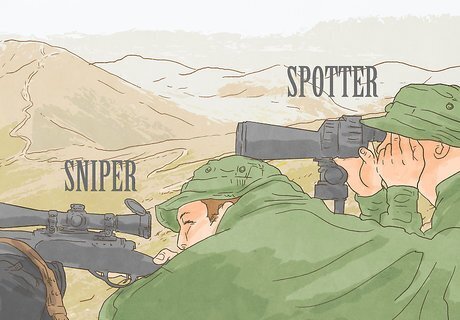
Consider being either a spotter or a sniper. Marine sniper courses actually cover training for two roles, snipers and spotters. Depending on your skills and your unit’s needs, you may train and/or serve as one or both. A sniper makes precision fires on selected targets, often from long ranges. Snipers also conduct surveillance and reconnaissance. Spotters detect, observe, and confirm sniper targets, and calculate the range and wind conditions on a given target. They also conduct surveillance and reconnaissance.
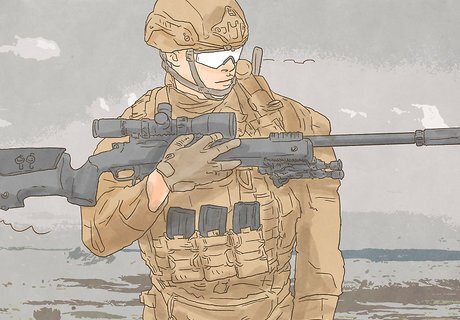
Complete an advanced sniper course. The Marines Special Operations School offers a four-week course to certify existing snipers at the advanced level. This is a great way to enhance your skills and move your career forward. The course is divided into five blocks: Block 1 teaches fundamental skills, offers ballistic training, and exercises live firing at 100-200 meters. Block 2 trains snipers in the use of ballistic software, sniper equipment, engagement techniques, known distance shooting, and the practical application of equipment. Block 3 covers sniper tactics and employment, foreign weapons, ballistic testing, glass shooting, unknown distance shooting (day and night) with various rifles, and the shooting of moving targets. Block 4 provides qualification through a composite score based on four drills including barricade shooting, day and night shooting at an unknown distance, and spotter qualification. Block 5 covers aerial sniping, explosive loophole breaching, loophole shooting, side-prone shooting, high-angle shooting, urban hides, vehicle hides, and the practical application of surveillance equipment. Block 5 also entails a culminating exercise of a four-day scenario in which sniper teams locate targets, conduct surveillance, and eliminate targets as part of a Marine Special Operations Team.




















Comments
0 comment